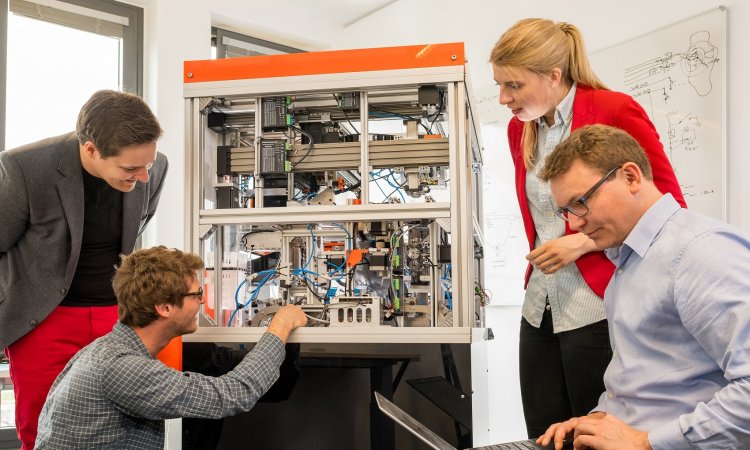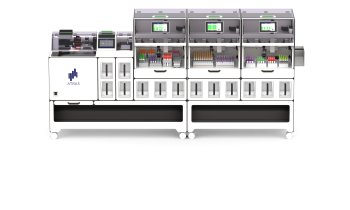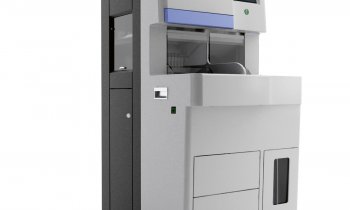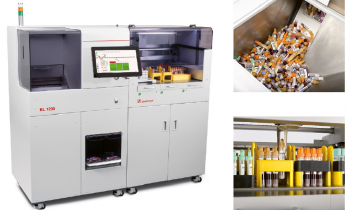New trends in Pathology Informatics
For several decades, pathologists worldwide have been under increasing pressure to handle a steady increase in laboratory tests with a steady decrease in the amount of financial and staff resources. Add to this the escalating volume of increasingly complex, sophisticated testing and the importance of pathology informatics is evident.


The Association for Pathology Informatics (API) held its annual Pathology Informatics Summit in Pittsburgh, PA in May. This is the only conference of its kind that discusses innovation and problems that informatics technology may have the potential to resolve.
European Hospital interviewed the man who coined the term “pathology informatics”, in 1990: Dr. Bruce A. Friedman, emeritus professor of pathology at the University of Michigan Medical School in Ann Arbor. He said that the 3.5 day conference covered a wide swath of topics, but that there were six major focus areas.
The burden of decreasing resources and escalating workloads was a key theme. A number of speakers urged attendees to speak out to their healthcare administrators about the power of clinical laboratory testing and anatomic pathology services to deliver big gains in patient outcomes and the associated costs of care. Friedman noted that at a typical hospital, pathology laboratories cost about 5% to 6% of the annual budget, but that about 75% of patient treatment is based on findings from laboratory tests. The consensus of session speakers was that clinical pathologists need to make themselves and the importance of this specialty more visible.
Laboratory information system (LIS) functionality continues to be under close scrutiny by pathology informaticists. For years in the United States, LIS software was dominated by a handful of specialized best-of-breed vendors. With the U.S. government push for the national adoption of electronic health records (EHR), EHR vendors are adding LIS modules to their offerings. According to Dr. Friedman, many of these are not robust enough or provide vitally important broad functionality. To offset this, the API developed a LIS Functionality Assessment Toolkit (LIS-FAT).
The toolkit contains a list of 850 functionality statements which can be used to determine in detail a metric to measure whether specific functionalities are absent or present in any LIS. As of mid-June, the free-of-charge toolkit has been downloaded approximately 2,000 times (www.pathologyinformatics.org/toolkit). “With this degree of acceptance, the toolkit is taking on some of the characteristics of a quasi-standard,” Friedman said. Some LIS vendors are even developing their individual responses to the 850 statements and making them available to clients. We are going to take advantage of this opportunity and add more functionality statements to make the toolkit in order for it to more closely resemble an IT standard.”
The broad deployment of digital pathology has been held back by U.S. federal regulatory issues, so the field has not evolved as rapidly as initially envisioned. One data-intensive field that is increasingly gaining attention is lab analytics. The lab analytic of business intelligence software enables lab professional to better understand the managerial and clinical changes in their labs using various dashboards. Anatomic pathology dashboards, for example, can display turnaround time for urgent biopsies or specimens that have been held up for various reasons. The goal for lab analytics is to provide faster, better, and less expensive services.
Other areas of growing interest are computational pathology, cancer genomics, and support for point-of-care (POC) testing. Cancer genomics in particular is an exploding field. The ability to identify abnormalities and defects in a cancer’s DNA can be used to helps identify the therapeutic agents that exploit the tumor’s genetic weaknesses.
Companion diagnostics is also attracting increased attention as healthcare payers want to know that extremely expensive drugs – some that can cost as much as $100,000 annually – are effective for the diseases for which they are being used. Testing for efficacy for expensive chemotherapeutic agents will become the norm, Friedman predicts, because as much as 50% of these treatments are not successful. He said that heathcare payers are becoming more demanding in wanting to know if expensive drugs are appropriately prescribed. Finally, with POC testing a fact of life and increasingly being demanded by physicians who want rapid test results, pathologists need to find ways to have managerial control over decentralized testing. That challenge was also discussed at great length at the summit.
The API is considering whether to make its 2015 summit an international event. “Pathologists throughout the world are increasingly turning to pathology informatics as a means to provide quality and cost-effective diagnostic services. We think it is time to make this meeting global in scope,” concluded Friedman.
Cynthia E. Keen
24.06.2014











